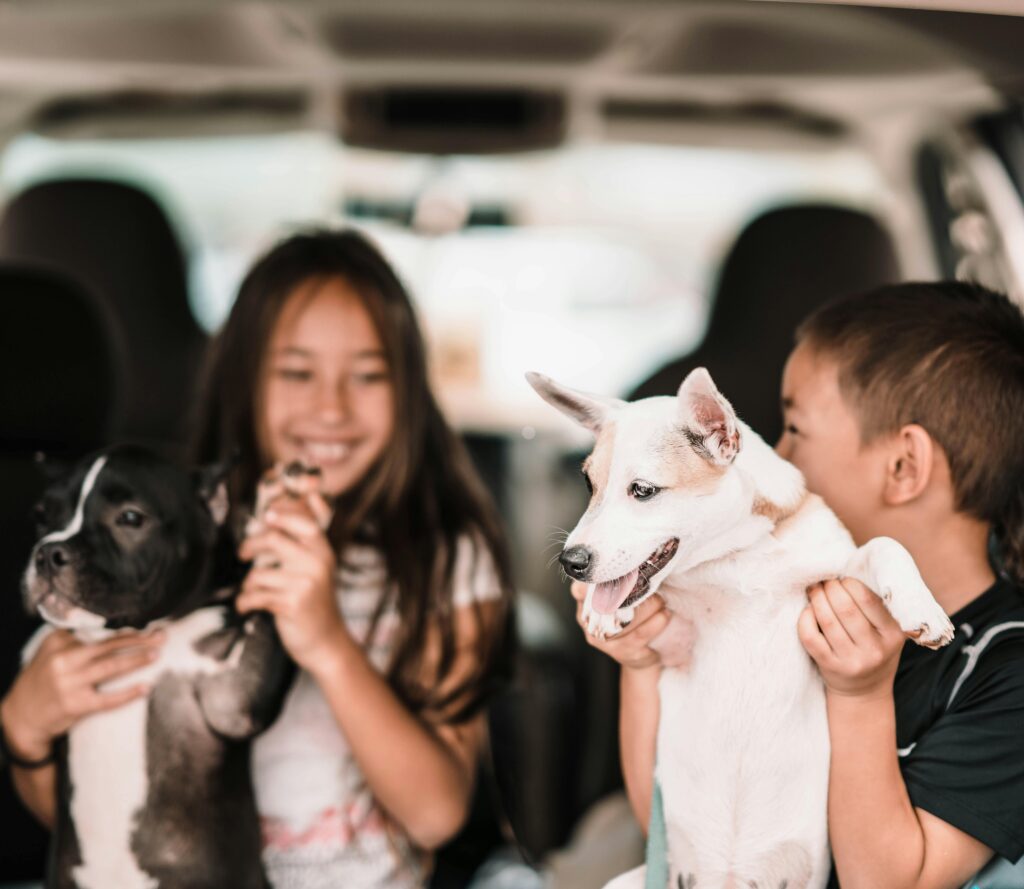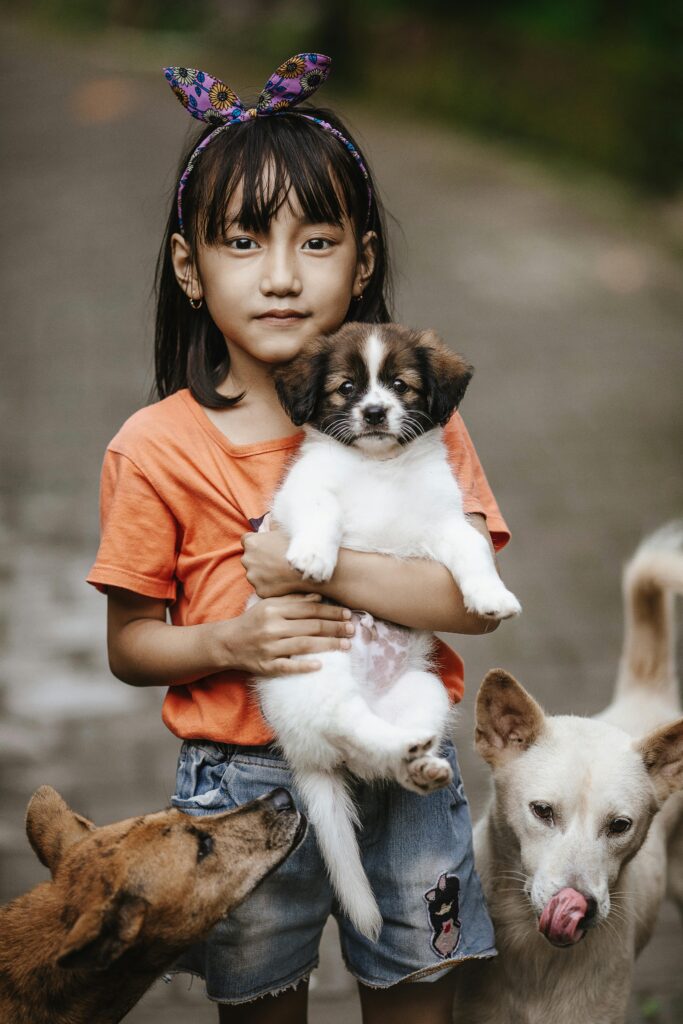Raising kids is a full-time job. So is raising a well-mannered dog. Trying to do both under one roof? That can either be a dream or a daily struggle. As a professional dog trainer, I’ve worked with countless families trying to juggle it all, and the good news is that with the right structure and strategy, your home can absolutely be a peaceful place for both your human and canine kids.
Whether you’re introducing a new puppy, managing a high-energy adolescent dog, or retraining an older family dog, this guide will give you practical, real-world tips to help kids and dogs thrive together.
Start With Clear Boundaries
Dogs and children both crave structure, even if they don’t always act like it. Just like you wouldn’t let your child run wild through a restaurant, your dog also needs clear limits.
Tips to Set Boundaries:
- Teach your dog a reliable “place” command to give them a safe space when play gets chaotic.
- Show kids how to give your dog space when they’re eating, sleeping, or chewing.
- Use baby gates or exercise pens to help manage interactions and prevent accidents.
- Model calm behavior for both parties, especially during greetings and play.
We’ve found that families who start with simple environmental management techniques see quicker success and fewer stress points in daily life. You can read more about how to confidently manage backyard and family dynamics in our post on Backyard Safety for Dogs: BBQs, Kids, and Distractions.
Let the Dog Be a Dog, But a Well-Trained One
Sometimes dogs get labeled as “bad” when they’re simply acting like… dogs. Jumping, barking, mouthing, and zooming are all natural, especially in younger pups. Training gives them a productive outlet for those instincts.
Top Obedience Skills for Family Dogs:
- Sit/Down/Stay: These commands help your dog stay calm during high-energy moments.
- Leave It: Crucial when toys, snacks, or stray crayons hit the floor.
- Come: For fast recall in case a door is left open.
- Place: A great command during dinner, homework time, or family movie nights.
If your dog struggles to stay focused with distractions, we recommend starting with our Basic Obedience Training Program. These foundational skills create a safer and more cooperative environment for everyone in the house.
Involve the Kids in Training
Training your dog doesn’t have to be an adults-only task. In fact, involving your kids can strengthen their bond with your pup and reinforce respect on both sides.
Kid-Friendly Ways to Participate:
- Practice commands together with adult supervision.
- Use clickers or reward markers to reinforce good behavior.
- Turn training into games, such as hide-and-seek with treats.
- Let kids help fill treat pouches and deliver rewards.
Make sure to give your child age-appropriate responsibilities and always supervise interactions. The goal is to build consistency without putting anyone in an unsafe position.
Prevent Rough or Unsafe Interactions
Kids often don’t recognize the warning signs of an overwhelmed or overstimulated dog. That’s where supervision and education come in.
Watch for These Red Flags in Dogs:
- Lip licking or yawning when not tired
- Whale eye (seeing the whites of their eyes)
- Growling or low warning grumbles
- Tucked tail or attempts to move away
Teach children the importance of consent-based interactions. Just because your dog tolerates rough hugging or tail pulling doesn’t mean they enjoy it. Respectful touch and space are key to avoiding bites and building trust.
Create Routines That Work for Everyone
Dogs and kids both benefit from predictable routines. Set up schedules for:
- Walks and potty breaks
- Training sessions
- Quiet time/crate time
- Mealtime and feeding responsibilities
Routines reduce anxiety for both your pup and your children. When everyone knows what to expect, the household runs more smoothly.
Mental Exercise Is Just as Important
One of the biggest mistakes families make is thinking a tired dog is only a physically tired dog. Mental stimulation matters, especially on busy school days or rainy weekends.
Try these enrichment ideas:
- Snuffle mats or treat-dispensing toys
- Food puzzles or slow-feeders
- Hide-and-seek with kibble or favorite toys
- DIY obstacle courses or scent games
Want more inspiration? Our recent guide to dog escape rooms shows how to blend fun and training into one brain-boosting session.
Know When to Ask for Help
If your dog displays behavior that’s aggressive, overly fearful, or unpredictable around children, don’t wait. Professional help can prevent injury and drastically improve the dynamic at home.
Look for signs such as:
- Guarding toys or space from your kids
- Growling when approached
- Excessive barking or anxiety when kids are playing
- Jumping or nipping during high energy moments
We work with many families through private sessions and tailored packages that address issues like reactivity, anxiety, and impulse control. We’re here to help set everyone up for success, not just your dog.
Helpful Resource
For more information on helping dogs and children safely coexist, the American Veterinary Medical Association offers a practical guide on dog bite prevention in households with children. It’s a solid reference every parent should bookmark.
Final Thoughts
Raising kids and dogs together is one of the most rewarding (and sometimes chaotic) experiences a family can have. But with proactive training, smart boundaries, and a little patience, your dog can become a calm, trusted member of your family unit.
If you’re feeling overwhelmed or unsure where to start, reach out to our team at Off Leash K9 Training Erie. We’d be happy to discuss how our programs can support your specific family dynamic and training goals. Start by connecting with us through our contact page.



